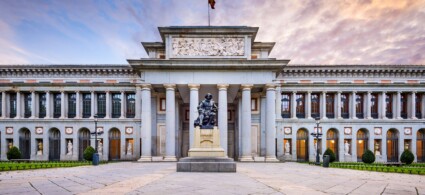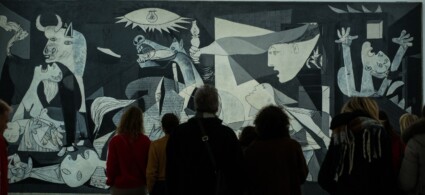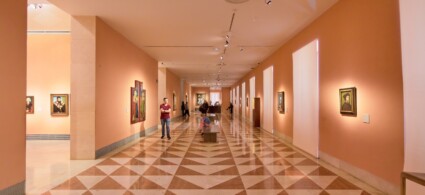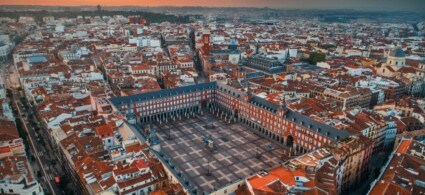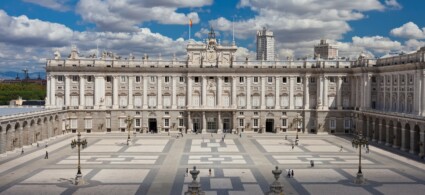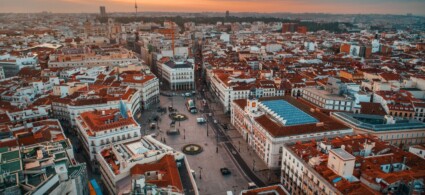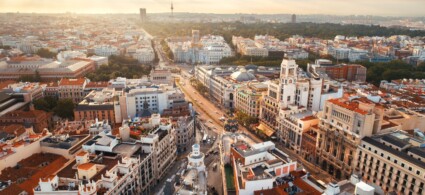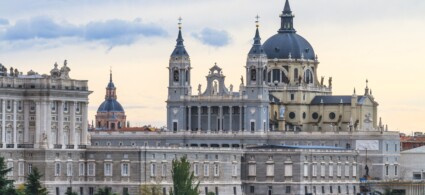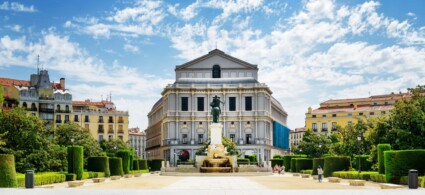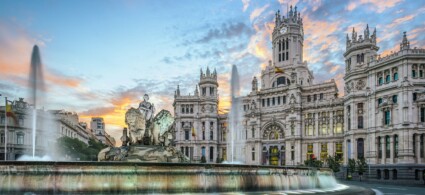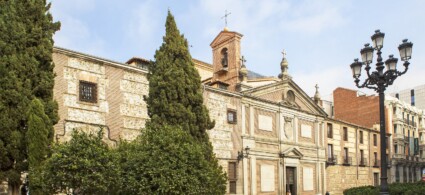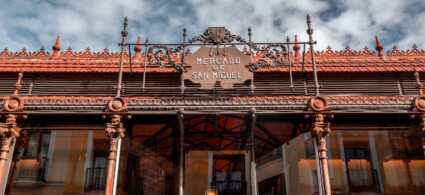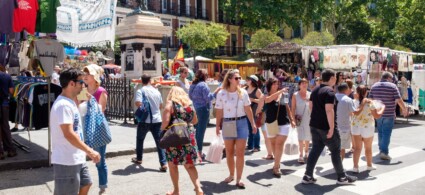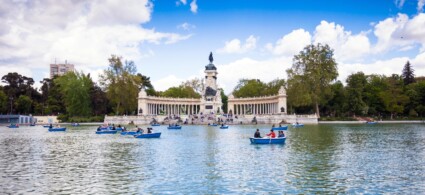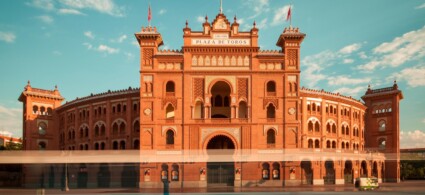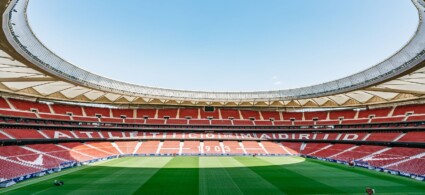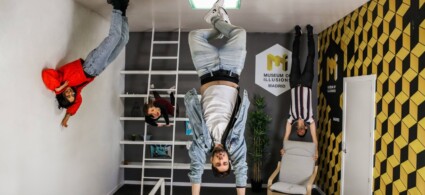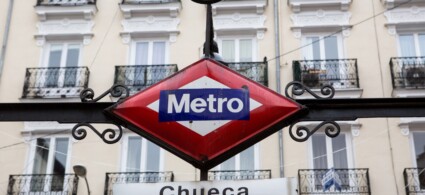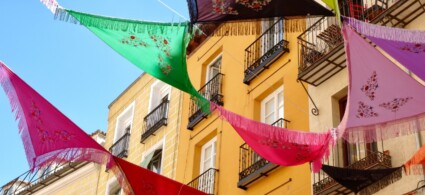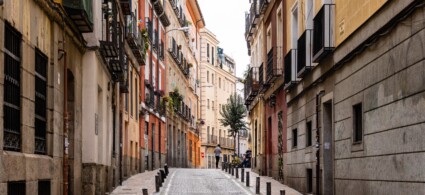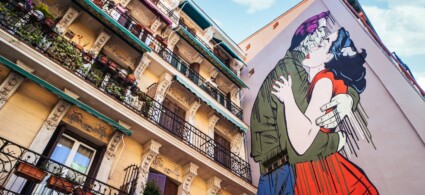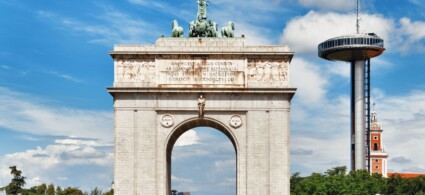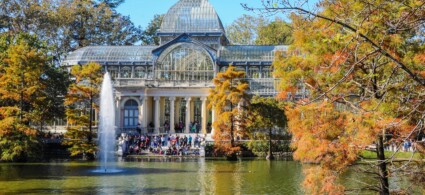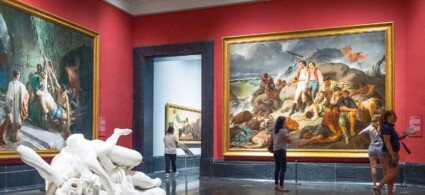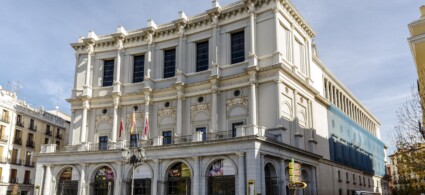

The first thing that comes to mind when wondering what to see in Madrid are its celebrated museums: what other city can boast three of the most prestigious museums in the world? Concentrated in a single street, which has been aptly dubbed the Paseo del Arte, the Prado, the Reina Sofia and the Thyssen-Bornesmiza are Madrid’s top attractions.
But Spain’s elegant capital is a unique mix of monumental majesty and eccentricity: tourists on holiday in Madrid can visit a sumptuous royal palace as much as an authentic temple of ancient Egypt, go shopping in the elegant shops of famous brands on Gran Via or in the colourful neighbourhood markets, stroll through elegant squares or admire a legendary stadium from above. Between visits, Madrid’s parks offer an oasis of relaxation and rest.
In a city that offers so much, aim for the best: here are the must-see attractions in Madrid.
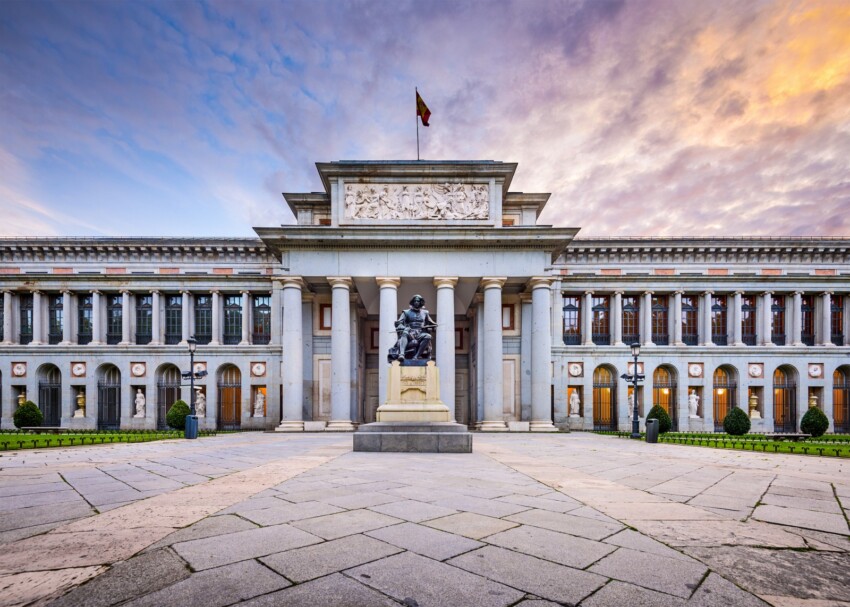
Madrid’s tourist reputation is largely linked to the Prado Museum, one of the most prestigious cultural institutions in the world, which alone attracts more than three million visitors a year to the Spanish capital.
It is a gigantic museum that traces the history of Spanish and European painting from the 13th to the 19th century, with a priceless collection that includes works by immortal artists such as Goya, Velázquez, Tiepolo, Titian, Dürer, Rubens, Rogier Van Der Weyden, El Greco and Bosch.
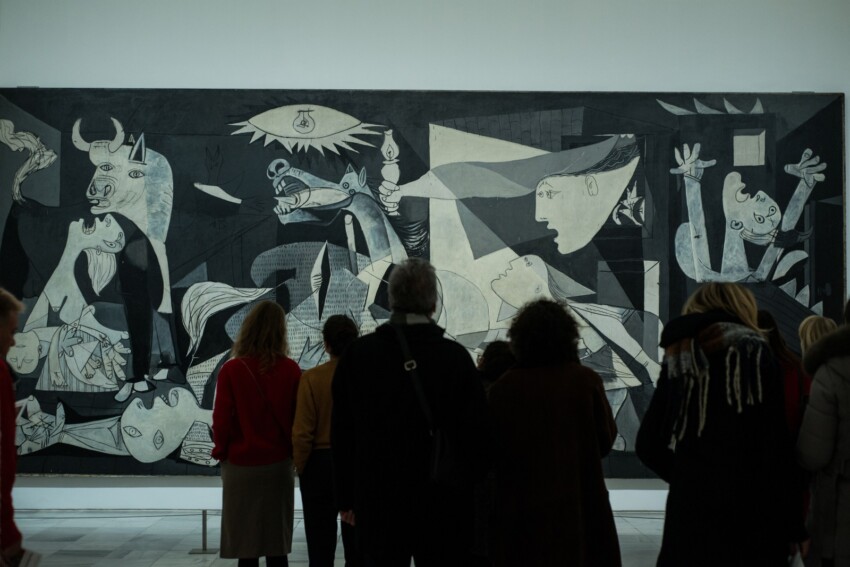
For many tourists, saying Museo Nacional Reina Sofía means only one thing: Guernica, Pablo Picasso’s famous painting depicting the atrocities of the Spanish Civil War.
If there is no doubt that this brilliant and touching work alone deserves the price of the ticket, it must be said that there are many priceless works on display in this museum dedicated to modern and contemporary art.
You can admire masterpieces by Dali, Miró and Picasso, the three greats of 20th-century Spanish painting, and many important international artists, and gain an in-depth insight into the complexity of contemporary art.

Include the Thyssen-Bornemisza Museum on your list of must-see museums in Madrid. The least famous of Madrid’s three great museums is no less interesting: it houses an extraordinary collection passionately collected by two German barons. After visiting it, you too will wonder how it was possible to put together such an artistic heritage in just two generations!
The museum collection of the Thyssen-Bornemisza includes works from the 14th to the 20th century and develops movements and currents that are only marginally represented in the Museo del Prado and the Reina Sofía such as Impressionism, the avant-garde and pop art; there is also a section devoted to North American painting.
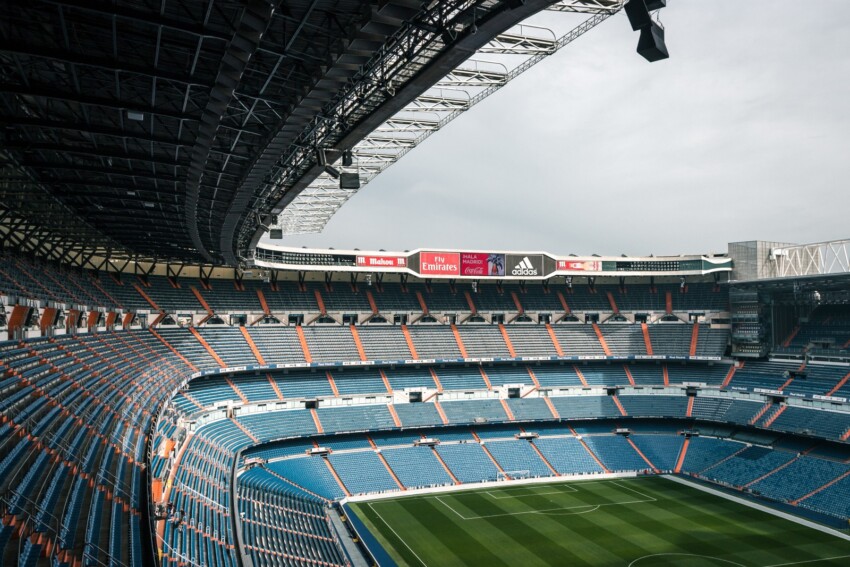
The most visited tourist attraction in Madrid after the great museums is dedicated to one of the great passions of Spaniards: football. The Santiago Bernabeu stadium, home of Real Madrid, the award-winning Spanish team, is a temple of sport: historic matches such as the 82 World Cup final won by Italy have taken place here and some of the best footballers on the international scene have played here.
Relive the emotions of the great football challenges by taking the Bernabeu Tour: you can admire a panoramic view of the stadium, visit a museum full of cups, jerseys and balls, consult a digital archive with historical and unpublished videos, but above all you will have access to the areas normally reserved for the protagonists, such as the changing rooms, the pitch entrance tunnel, the press box and the presidential balcony.

Add a touch of class to your holiday in Madrid by visiting the Palacio Real, the largest royal residence in Europe: with its three thousand rooms it is bigger even than Versailles.
You will only be able to visit ‘only’ 50 of them, but it will be enough to make you bewitched by the splendour and opulence of this historic palace, a Baroque masterpiece with neoclassical influences.
Still officially the residence of the kings of Spain, but don’t expect to find them at home: in fact the Palacio Real is only used for official ceremonies while the kings live in another palace outside the centre.

One of the main arteries in the centre of Madrid is the famous Gran Via, the result of a massive urban renovation project that required the demolition of no less than three hundred houses and the alteration of 50 streets in the early 20th century.
Today, this long avenue lined with elegant buildings, crowded at all hours of the day, is famous for shopping: historic shops such as the luxurious Loewe find space next to the megastores of the big international chains.
The last stretch of the Gran Via is packed with theatres, many of which present musicals and have earned the area the nickname of Madrid’s Broadway; there are also historic movie theatres and a large number of restaurants, bars and clubs.

The squares are the beating heart of any big city and Madrid is no exception. The squares in the centre are large and elegant, often the result of extension and redevelopment work ordered by kings over the centuries.
The largest square in Madrid is Puerta del Sol7, which symbolically represents the centre of all Spain. It is a simple plaque on the pavement that gives it this symbolic characteristic: we are talking about the plaque indicating the ‘zero kilometre’, the point from which the different national roads that lead from the capital to the most disparate points of the country radiate outwards.
A must for all tourists is the magnificent Plaza Mayor8, whose current appearance dates back to the late 18th century. The monumental Arco de Cuchilleros, one of the nine entrances to the square, is one of the most photographed corners of the entire city: via a flight of steps, the arch connects Plaza Mayor to Cava de San Miguel and the difference in height between the two is visually striking.
A special place in the hearts of Madrileños belongs to Plaza de Cibeles9, famous because Madrid fans gather here to celebrate football victories and more.
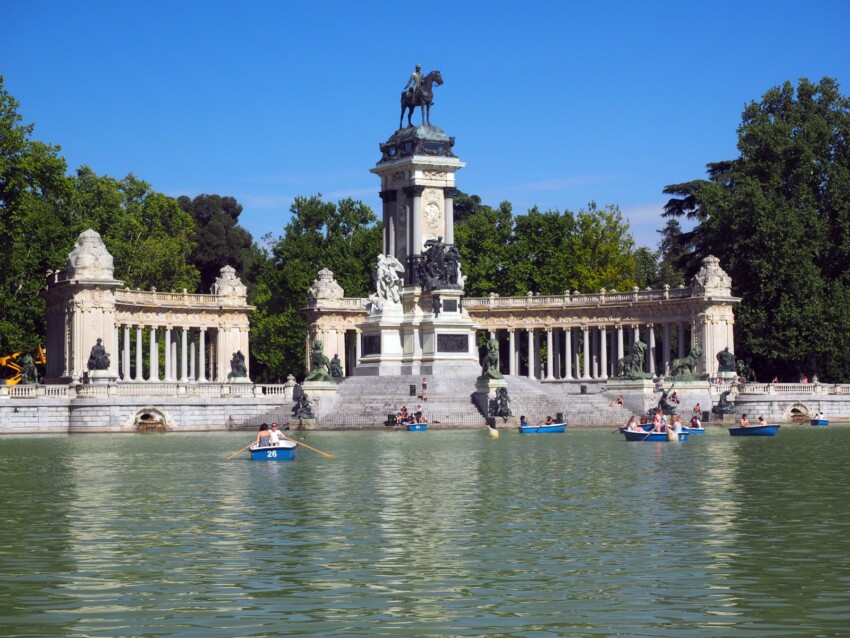
Madrid’s green lung is the Retiro Park, which you will certainly have already seen on many postcards and pictures of the city. Definitely photogenic is the artificial lake with the Monument to Alfonso XII in the background. If you are in Madrid for a holiday for two, you cannot fail to rent a small rowing boat and spend a couple of hours in total romance.
The park is really huge and you could spend a whole day here strolling through its paths and gardens, visiting the art exhibitions in the Glass Palace and the Velázquez Palace, sipping coffee on an outdoor terrace or admiring the statues, monuments and buildings that adorn this part of Madrid so dear to its citizens.
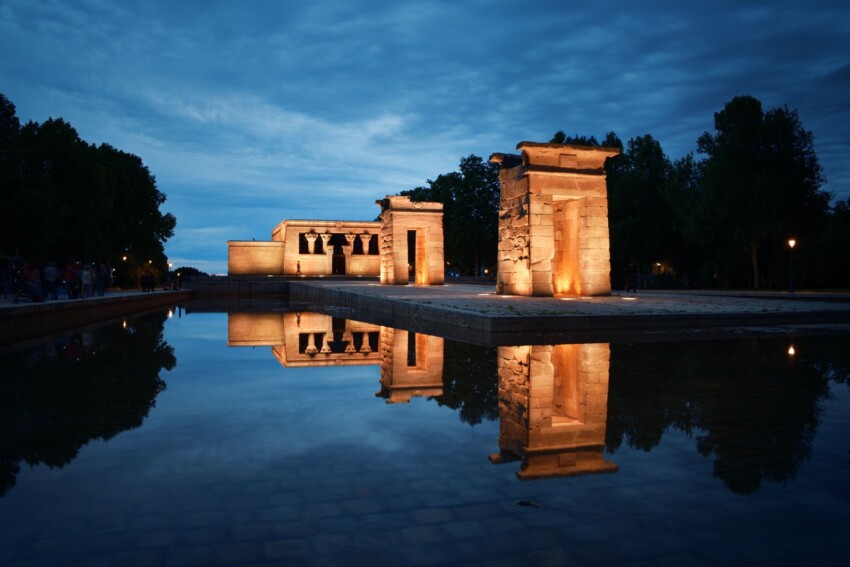
The most bizarre and at the same time most striking attraction in Madrid is the Temple of Debod, an authentic 2nd century BC Egyptian temple transported stone by stone from its original location along the Nile Valley to Madrid as a ‘gift’ from the Egyptian government.
Now located within the Cuartel de la Montaña park and surrounded by a pool of water resembling the river, it is a magnificent sight that becomes even more exciting at sunset or in the evening, when the temple’s beauty is enhanced by the lights and reflections on the water.

Of all the markets in Madrid, the most famous and the one with the largest number of stalls is Rastro Market12, which started as a flea market and has expanded tremendously over the years.
Gourmets should not miss San Miguel Market13, an indoor market that is considered a true gourmet paradise. From caviar to tapas, you can sample all sorts of Spanish and international delicacies and buy top-quality food, including some hard to find.
Less well known among tourists but no less picturesque is Mercado de San Fernando14, an indoor market in the lively multi-ethnic district of Lavapiés, where you can find food, clothing, accessories and bookshops. The most original stall is La Casqueria, which sells second-hand books … by weight!
Discover Madrid through the eyes of expert guides who will take you on a tour of the city's hidden treasures. Participating in a guided visit or a free tour will allow you to capture the true essence of Madrid.
The free tours are a viable alternative to traditional guided tours. They work like this: participation is free and at the end of the visit you can leave a tip at your discretion. Below you will find our favourite free tour, otherwise you can see the full list by visiting this page.
City Card allow you to save on public transport and / or on the entrances to the main tourist attractions.

